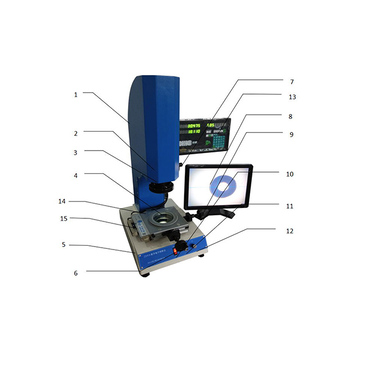cable smoke density test chamber company
Cable Smoke Density Test Chamber Ensuring Safety and Compliance in Electrical Applications
In today’s increasingly electric world, the safety and reliability of electrical cables are paramount. Among the various aspects of testing cable performance, smoke density during combustion is a critical factor that directly affects fire safety. This is where the Cable Smoke Density Test Chamber plays a vital role, providing manufacturers and regulatory bodies with the means to evaluate and ensure the fire performance of electrical cables.
Understanding Smoke Density Testing
Smoke density testing measures the amount and opacity of smoke produced when a cable is subjected to fire or high heat conditions. Increased smoke density can limit visibility and lead to hazardous situations during a fire, making it imperative for cables used in buildings and public spaces to produce minimal smoke. Thus, understanding the smoke characteristics of a cable helps in assessing its safety and compliance with various regulations and standards.
The cable smoke density test chamber simulates a controlled environment where cables are exposed to flame or increased temperature. This controlled test atmosphere allows for accurate assessments of how much smoke is produced and its density, which can be quantified using specific metrics. Various national and international standards, such as ASTM E662 and ISO 5659, outline the testing methodologies and criteria for smoke density measurements.
Importance of Cable Smoke Density Test Chambers
1. Safety Compliance One of the primary reasons for conducting smoke density testing is to comply with safety standards. Governments and regulatory agencies have set guidelines regarding the permissible levels of smoke emission from cables. Test chambers enable manufacturers to ensure that their products meet these essential safety standards before they are brought to market.
2. Fire Prevention Low smoke-producing materials are crucial in minimizing hazards during fire emergencies. High smoke density can obstruct escape routes and complicate rescue operations. By using smoke density testing, manufacturers can develop cables that contribute to safer environments, particularly in high-occupancy buildings, public transportation systems, and critical infrastructure.
cable smoke density test chamber company

3. Quality Assurance Regular testing in cable smoke density test chambers ensures that manufacturers produce high-quality, reliable products. Understanding how different materials behave under fire conditions enables manufacturers to make informed decisions about the materials used in their cables, ultimately leading to enhanced performance and customer satisfaction.
4. Research and Development Smoke density test chambers are essential tools in the research and development pipeline for new cable technologies. Innovators can explore new materials and designs while understanding their smoke characteristics during simulations. This research is crucial in advancing cable technology to meet evolving safety regulations and performance expectations.
Choosing the Right Test Chamber
When it comes to selecting a cable smoke density test chamber, several factors must be considered. The chamber should meet the necessary standards for testing and calibration, ensuring accuracy and reproducibility in results. Features such as automated data collection, user-friendly interfaces, and integration with other testing equipment can enhance the testing process and improve efficiency.
Moreover, manufacturers should look for chambers with robust safety features, as handling materials that may combust introduces risks. Briefings on how to operate the equipment safely and effectively are also important for laboratory personnel.
Conclusion
The importance of cable smoke density test chambers cannot be overstated in the field of electrical cable manufacturing. They not only facilitate compliance with safety standards but also significantly contribute to fire prevention and enhance overall cable quality. As technology continues to evolve, and with the increasing demand for safer electrical systems in our communities, investing in reliable cable smoke density testing is a commitment to public safety and responsible manufacturing practices. By ensuring minimal smoke production, manufacturers can help create safer environments for all, paving the way for future innovations in electrical technologies.
-
Why the Conductor Resistance Constant Temperature Measurement Machine Redefines Precision
NewsJun.20,2025
-
Reliable Testing Starts Here: Why the High Insulation Resistance Measuring Instrument Is a Must-Have
NewsJun.20,2025
-
Flexible Cable Flexing Test Equipment: The Precision Standard for Cable Durability and Performance Testing
NewsJun.20,2025
-
Digital Measurement Projector: Precision Visualization for Modern Manufacturing
NewsJun.20,2025
-
Computer Control Electronic Tensile Tester: Precision and Power for the Modern Metal Industry
NewsJun.20,2025
-
Cable Spark Tester: Your Ultimate Insulation Assurance for Wire and Cable Testing
NewsJun.20,2025
 Copyright © 2025 Hebei Fangyuan Instrument & Equipment Co.,Ltd. All Rights Reserved. Sitemap | Privacy Policy
Copyright © 2025 Hebei Fangyuan Instrument & Equipment Co.,Ltd. All Rights Reserved. Sitemap | Privacy Policy
